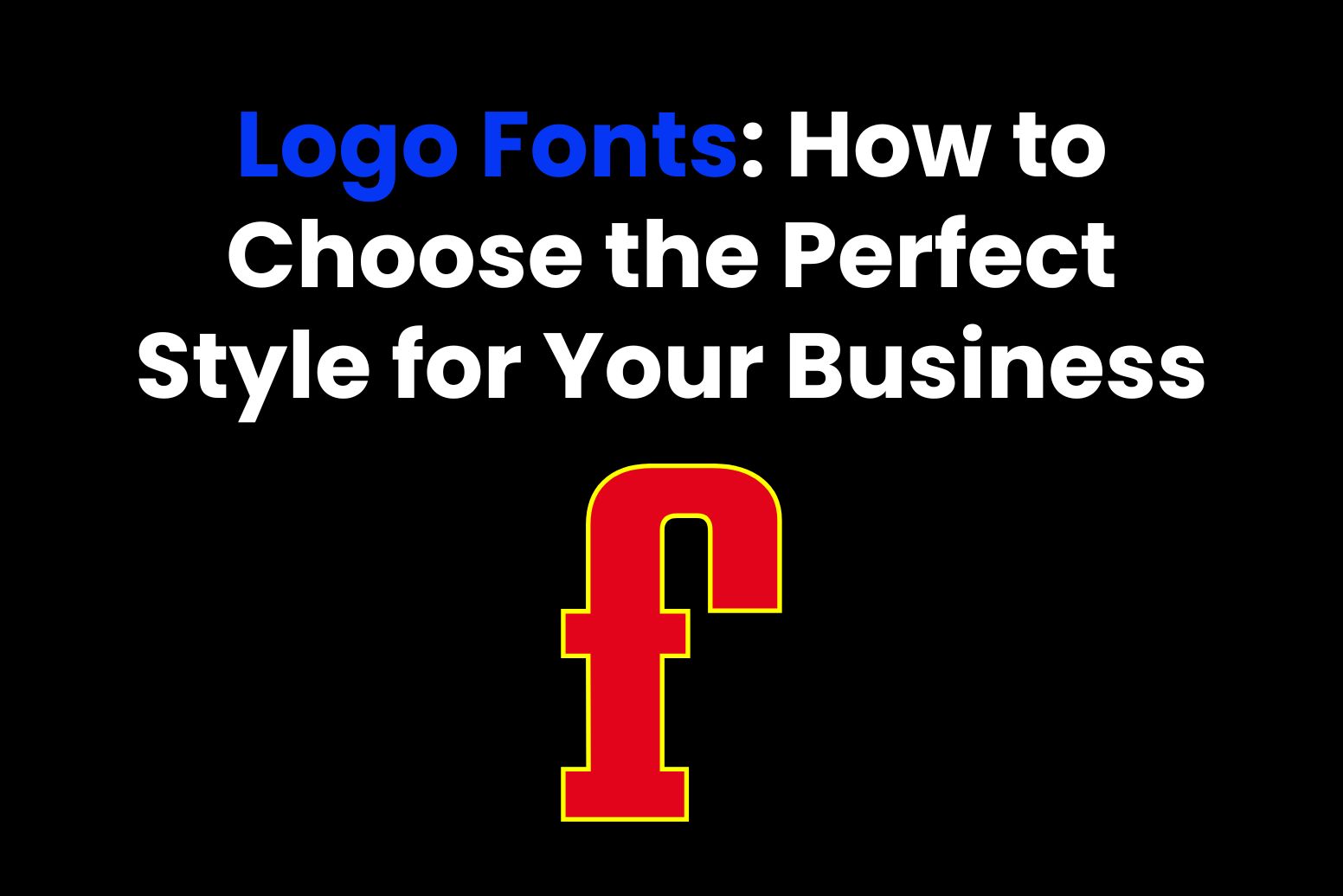In the branding world, a logo is more than just a visual mark; it is the face of your business. The font is a critical component in creating logo. Logo fonts do not just say the name of a business; they evoke emotions, communicate values, and set the tone for the brand’s identity. The ideal logo font choice may leave indelible marks where a customer associates certain feelings or ideas with your business. In this guide we take you into the world of logo fonts and advice on choosing a perfect font for business.
Part 1: What Are Logo Fonts?
Logo fonts are specifically picked typefaces, which form part of the logo design to represent the name of a luxury brand or its slogan. Unlike the standard fonts available, logo fonts are deliberately selected based on aesthetics, readability, and emotional influence to match the personality or objectives of a specific brand.
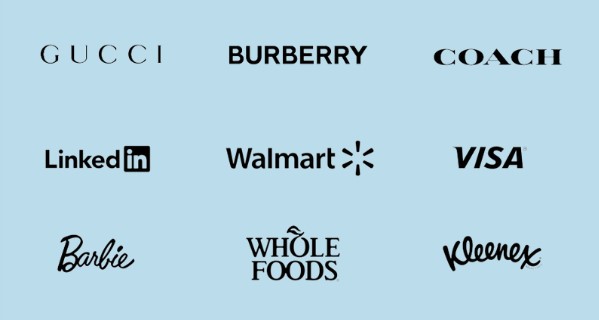
Logo Fonts and Standard Fonts
Standard fonts use in documents or web content, but logo fonts use only for branding purposes. Standard fonts focus more on legibility rather than style, while logo fonts find a balance between legibility and visual impact. In most cases, the logo has become unique with custom letter spacing and shapes to keep the logo out of the crowd and easy to remember.
How Logo Fonts Impact Visual Branding
Logo fonts are a crucial element of visual branding. The font style, whether modern, vintage, playful, or professional, immediately communicates the soul of a brand. For instance:
- A serif font communicates tradition and professionalism.
- A sans-serif font communicates modernity and simplicity.
- A script font can add elegance and a personal touch.
By choosing a font that supports the brand message, businesses can have the same visual language across the website, packaging, and other touchpoints.
Why Logo Fonts Matter in Branding
- Emotional Connection: Fonts can evoke emotion. A playful, rounded font will make customers happy and relaxed, while a strong, angular font will project strength and confidence.
- First impression: Your logo is often the first interaction a potential customer has with your brand. A well-chosen font can attract attention and create a positive first impression, while a poorly chosen one might drive people away.
- Consistency and Recognition: A unique logo font becomes associated with your brand. Using it consistently on all branding materials will reinforce brand recognition and establish trust.
Part 2: Types of Logo Fonts
Serif Fonts
Serif fonts are a common choice for those presenting a classic and professional outlook, thus suitable for those businesses that wish to gain an impression of trust, tradition, and reliability. These fonts have the characteristics of being formal and clean because of the small lines at the ends of the letter or embellishments, termed as serifs.
Examples of Brands Using Serif Fonts
- The New York Times: A classic example of a serif font, the bold and refined style of their logo conveys credibility and long-standing trust.
- Rolex: The luxury watch brand uses a serif font in its logo to evoke sophistication and timelessness.
For brands that have the authority and tradition pertinent to the industry they’re in, including finace, law, education, and publishing, serif fonts are best.
Sans-Serif Fonts
Sans-serif fonts characterize by their clean and simple design, lacking the small strokes (serifs) that adorn traditional fonts. These fonts are modern, minimalistic, and more accessible in digital formats, making them a popular choice for contemporary brands.
Examples of Brands Using Sans-Serif Logo Fonts
Sans-serif fonts are usually applied in the tech, startups, and consumer goods industries and any other business that focuses on simplicity, innovation, and ease of use. Brands like Apple and Google apply sans-serif fonts to reinforce their modern and user-friendly image. Sans serif font works for quite a lot of other industries like software companies, digital media, and health & wellness brands.
Script Fonts
Script fonts are created to be as close to handwriting or cursive as possible, making the logo appear more personal. The range of these designs can be elegant and flowing or playful and quirky. These fonts can give a brand a personalized, boutique feel, making it feel more approachable and memorable.
Examples of Brands Using Script fonts
High-end brands often make use of script fonts in order to give the impression of luxury and exclusivity. The flowing, ornate style of script fonts says craftsmanship and attention to the details. Script fonts can be used by a multitude of fashion, jewelry, and event planning businesses owing to their ability to display elegance. For example, Coco Chanel uses a logo with a script-like font to convey both luxury and timelessness; Hallmark uses script in order to evoke care and celebration.
Display Fonts
Fonts that are very bold and eye catching, sometimes in unusual forms. They are made to grab attention immediately. These kinds of fonts are made particularly for logos, headlines, or any situation where one’s aim is to attract one’s attention right away. They are highly stylistic and can be varied to suit the personality of a brand.
Examples of Brands Using display fonts.
Display fonts work great for creative-industry brands or those seeking bold, strong expressions. Many entertainment companies, sports teams, and even fashion brands that would like to have a highly distinguishable logo in an interesting display font, thus expressing themselves differently from everyone else, use this category. These are Disney, Coca-Cola, etc.- very famous logos using strong brand recognition through a simple but memorable, eye-catching display font.
Part 3: Choosing the Right Logo Font for Your Brand
Choosing the right logo font involves much more than picking any good-looking font; you also need to understand your brand’s personality. The brand personality describes how customers see your business in terms of its values, tone, and style. It matters whether your brand is fun, professional, luxurious, or casual; so will the font that you’ll use for your logo.
Matching Font Styles with Industry and Target Audience
Choosing a logo font that represents both your industry and target audience is important in creating an integrated brand identity. A proper font style can express your brand’s purpose immediately, thus resonating with your target audience.
Industry Factors
- Luxury Brands: Luxury goods or fashion industries tend to use elegant, sophisticated fonts such as serif or high-end script fonts. These represent exclusivity and opulence.
- Tech and Startups: Startups and tech companies usually prefer sans-serif fonts to give a clean, sleek, and modern look. These fonts are often used to convey innovation and efficiency.
- Health and Wellness: Brands in this sector might use soft, rounded fonts to convey a sense of calm and trust. Serifs can also work if the brand is positioned as a professional healthcare provider.
- Entertainment and Sports: Display fonts, bold and dynamic can be used for entertainment or sporting brands, where the requirement is to make an impact and generate excitement.
Targeted Audience:
Consider the sensibilities and expectations of the target audience. Young audiences may be attracted to clean, minimalistic fonts; older generations may prefer a more traditional, readable serif font.
Common Mistakes to Avoid When Choosing Logo Fonts
Making a wrong choice in logo fonts is a mistake that can completely undermine your branding efforts. Here are some common mistakes to avoid when selecting a font for your logo:
Prioritizing Style Over Readability
Creativity is great, but at the same time, not at the cost of readability. Your logo should easily be readable on a billboard or a mobile screen at any size. Overly decorative or intricate fonts often become illegible at a smaller size.
Ignoring Brand Consistency
Your font should reflect the general look and feel of your brand. A clash between your font and your brand’s voice can be confusing and dilute brand recognition. For example, a playful, quirky font might not fit a law firm, because it would undermine the serious tone you are trying to convey.
Following Trends Too Closely
While it can be tempting to choose a trendy font, it’s important to focus on longevity. Fonts that are popular today may not stand the test of time. Aim for a style that will still resonate with your audience years down the line, rather than one that may quickly become outdated.
Using Too Many Fonts
Another characteristic to avoid is using a maximum number of one or two fonts. This will avoid complicated and unclear designs that include too many fonts and messages. Use a major font and, if required, a minor font, making sure it is related or complementary to the first font.
Not Considering Different Media
Ensure that your logo font works seamlessly across various platforms and forms of media. In other words, your logo use in various environments — such as your social media profile or even a huge outdoor sign. The same font that’s awesome in one application is terrible in another. To assure consistency and readability, testing your logo on diverse materials and screens is quite critical.
Part 4: Tools to Create Stunning Logos Using Fonts
Today, creating a breathtaking logo has never been easier with all the logo design tools there are. Now, a business of any size can design professional-looking logos without having to have in-house designers. Through several features like choosing and customizing your fonts, giving templates, one can create a visual identity for a brand. The secret behind a great logo design lies in the correct choice of font that depicts the brand’s personality and connects well with your audience. Whether modern or seriffed, there are some excellent logo design tools available today that can make this all much easier by trying on different options and getting just the right fit.
Free Tools:
Canva
Canva is a popular online graphic design tool that allows for an easy-to-use interface in designing logos. It boasts a library of free and premium fonts. It can use to produce great logos. The different fonts and other design elements may be tested by the drag-and-drop feature so you come up with the best logo suitable for your brand.
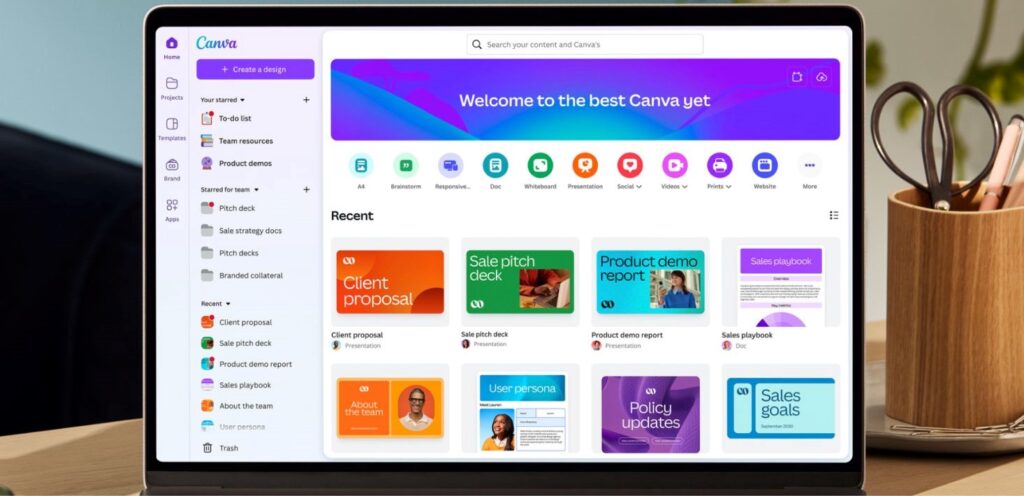
Hatchful by Shopify
Hatchful is the free online tool for a logo maker: it can offer as wide a number of the text styles for you, has a well-developed catalog of templates, is user-friendly so that making professional logos becomes possible in the shortest possible term, even industry-specific – to help determine the ideal selections of fonts by your type of business.
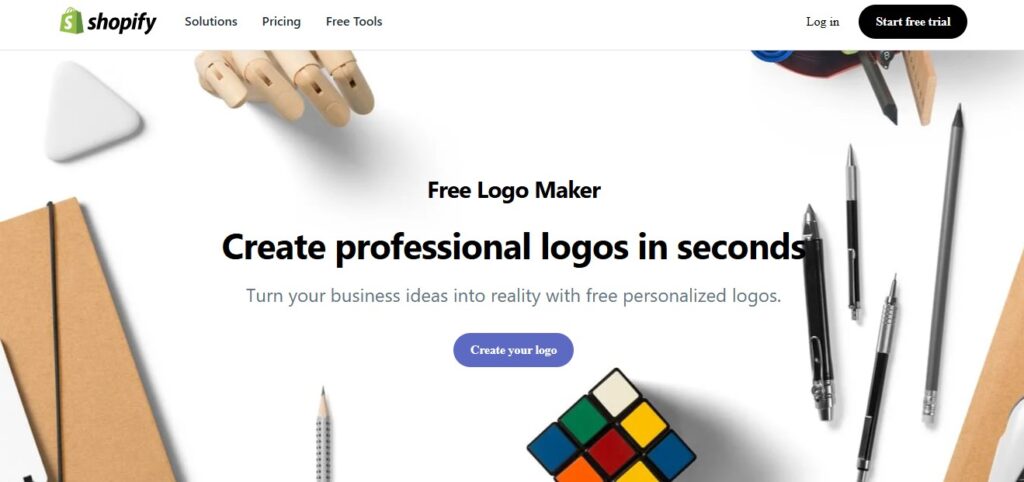
LogoMakr
LogoMakr has a huge library of fonts, thousands of icons to choose from it is free logo design service. The free basic design tool does charge for high-resolution downloads of your logo. It is perfect for small businesses who want to create a logo in a jiffy with easy-to-use font customization options.
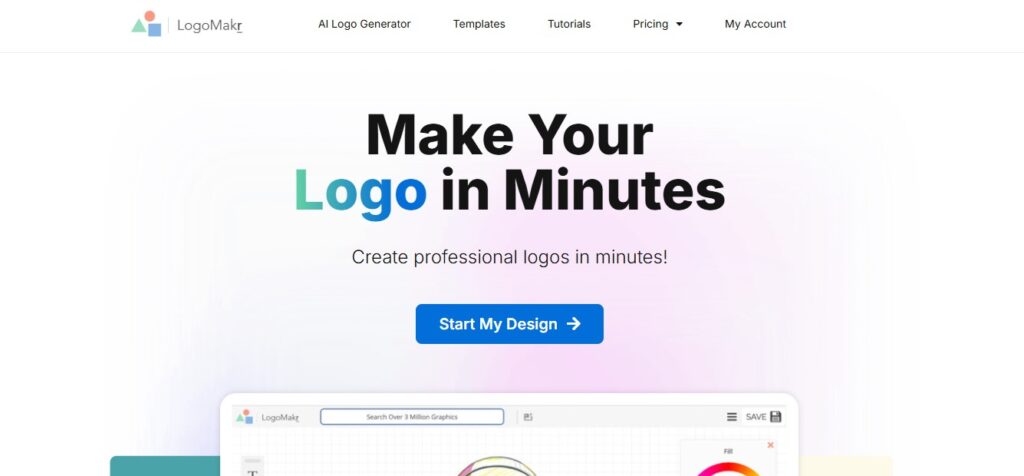
Paid Tools:
Adobe Illustrator
Adobe Illustrator is one of the powerful design software where professional logo designers work with it. It provides very high-quality fonts and enables customization of font styles in addition to the advanced tools to manipulate every aspect of your logo design. Adobe Illustrator is suited for those who want the highest control over their design; however, it requires experience and expertise.
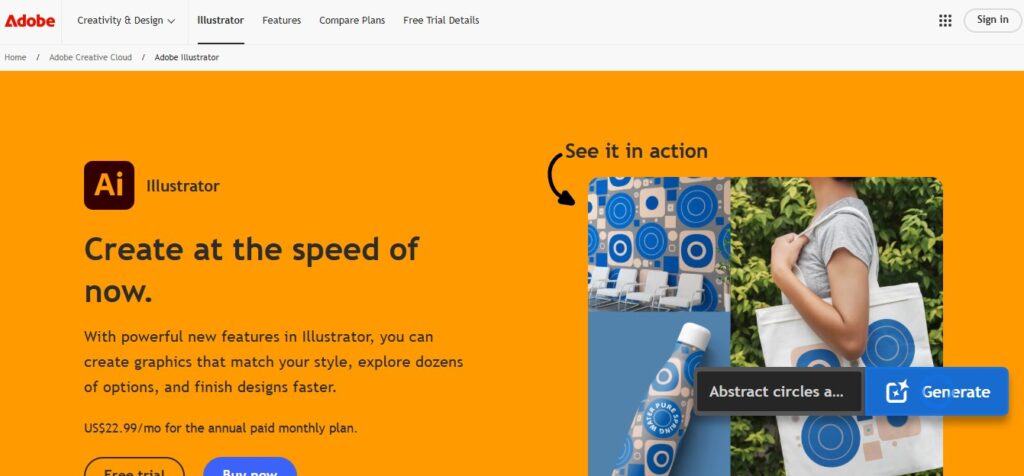
Looka
Looka’s is an AI logo design tool with a user friendly interface and hundreds of fonts to pick from. With Looka, you can input your brand name and industry, and the tool will generate several logo options with font suggestions that match your business personality. You can further customize your logo, including the font style. The paid plans in Looka have high-quality files and advanced design features.
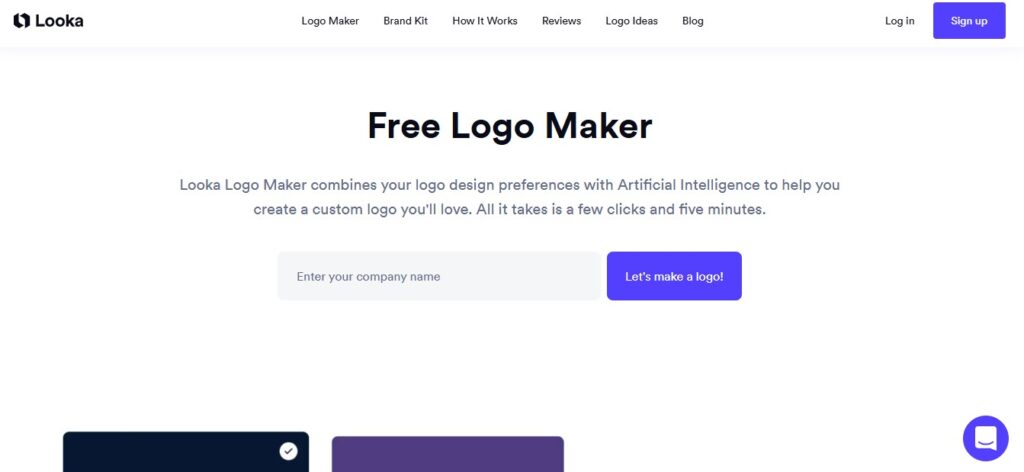
Tailor Brands
Tailor Brands offers a full logo design tool, allowing you to customize the fonts, colors, and icons according to your brand values and industry. It is ideal for those who require quick results because it uses artificial intelligence to suggest logo styles and fonts. The paid version will allow you to access other features such as logo files for different formats and business branding materials.
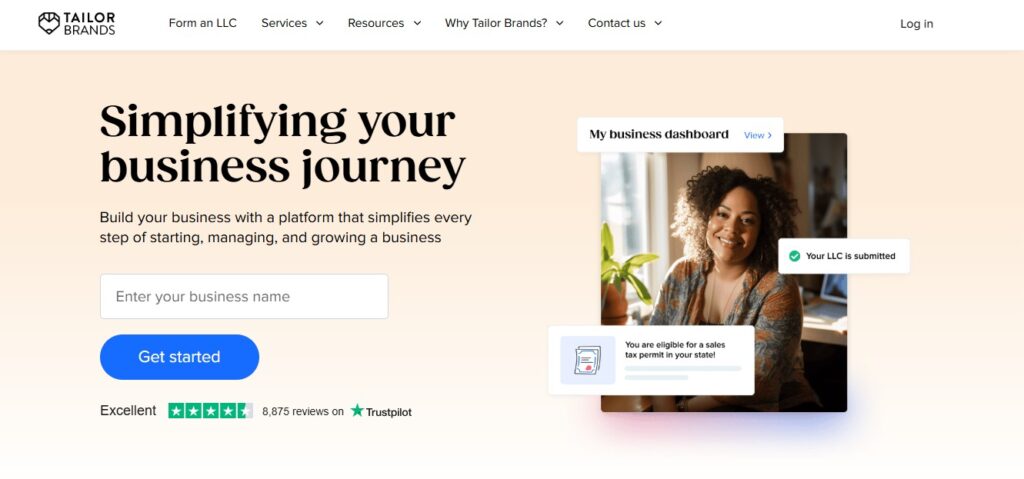
How AI Tools Like Arvin AI Revolutionize Font Design
Artificial intelligence has already revolutionized logo design; tools like Arvin AI are at the forefront of this revolution. Arvin AI makes the process easy by analyzing your brand attributes and automatically selecting fonts suited to your business personality as well as your target audience.
Part 5: Arvin AI: Simplifying Logo Font Selection and Design
Arvin AI is an automated tool that helps cut down the logo font selection and design process using Artificial Intelligence. Whether you are a small business owner or a designer, Arvin AI can help you choose the perfect font that will reflect your brand’s personality and appeal to your target audience. This gives it a sense of intuitive platform for the creation of easy logos; that is, your design pops out and connects with customers.
Key Features of Arvin AI
- Personalized Font Recommendations: Arvin AI analyzes your brand’s identity—industry, tone, values, and target audience—and suggests fonts that align with your unique business characteristics.
- Instant Font Preview: This means that you will have a view of your design before deciding on a font. This saves time and avoids the guesswork in the selection of a font.
- Customization: Once the AI has proposed a font, you can fine-tune the design by adjusting the spacing, size, and style so that the font does not compromise the aesthetic value of your logo.
- Versatility Across Media: Arvin AI offers optimized font choices for both digital and print applications, meaning your logo will always read well and be impactful across the board.
- User-Friendly Interface: The website is designed to be user-friendly, accessible to non-designers as well as professionals. It is intuitive to use the tool, navigate through, and easily customize your logo design.
- Time Saving: With the ability to reduce the hassle with the process of selecting typefaces with AI, the Arvin AI will thus save you hours of boring design work to present you with highly professional logo options fitting exactly your brand’s needs.
Steps to Use Arvin AI for Logo Design
Step 1: Sign up and log in
Go to the Arvin AI website, create an account, and log in to access the logo design feature.
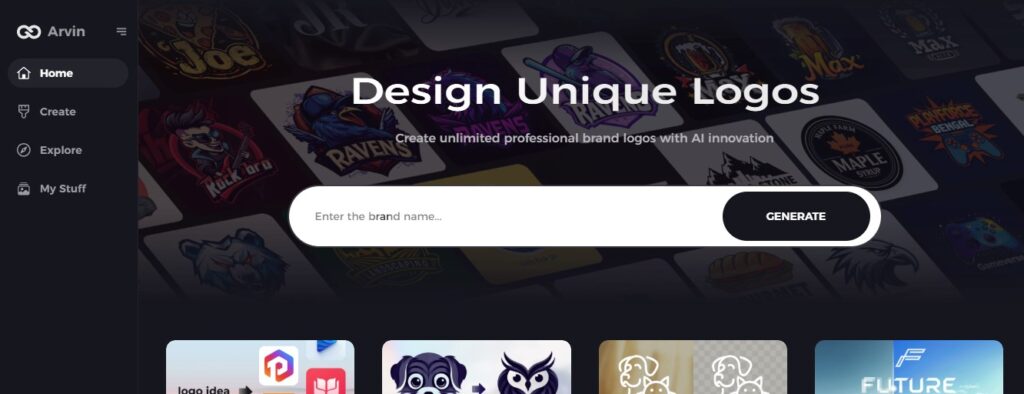
Step 2: Enter your brand details
Provide your brand name, slogan, and industry. Add any preferences, like specific font styles or themes, to guide the design.
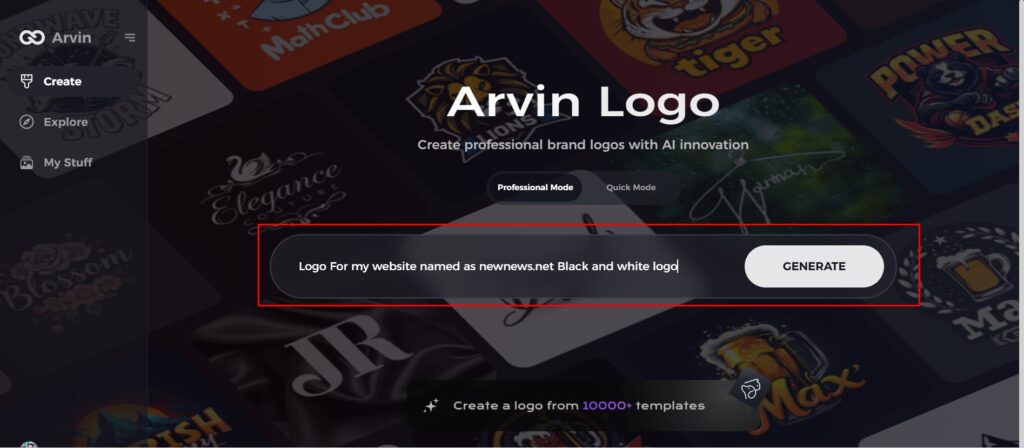
Step 3: Choose your industry
Select the industry your business belongs to. This helps the AI suggest logo styles that fit your niche.
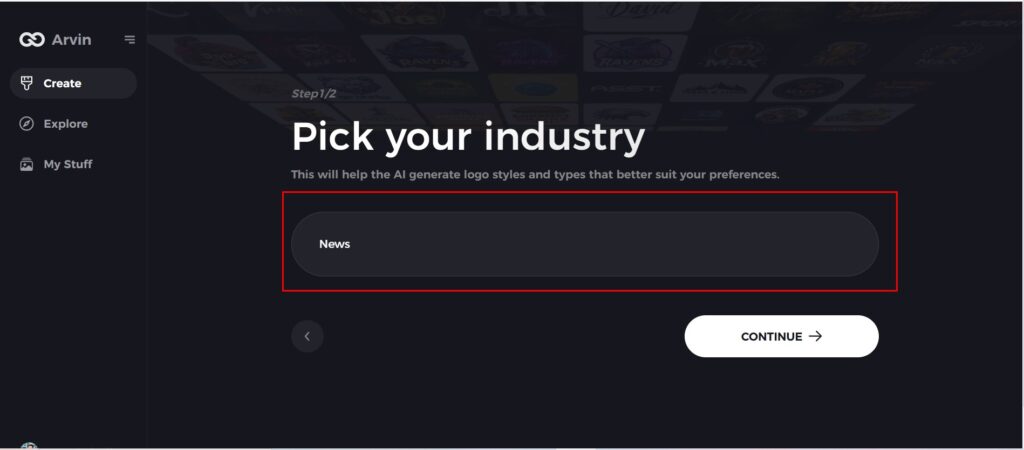
Step 4: Pick a style
Choose a logo style you like. This selection will inspire the AI to create designs that match your vision.
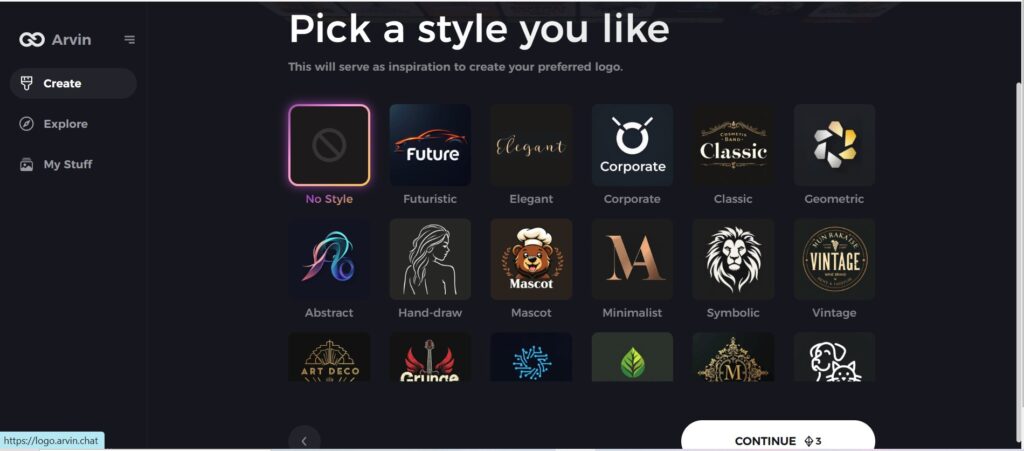
Step 5: Customize your logo
Once Arvin AI generates options, use the tools to adjust elements like fonts, layouts, and symbols. Experiment until you’re happy with the design.
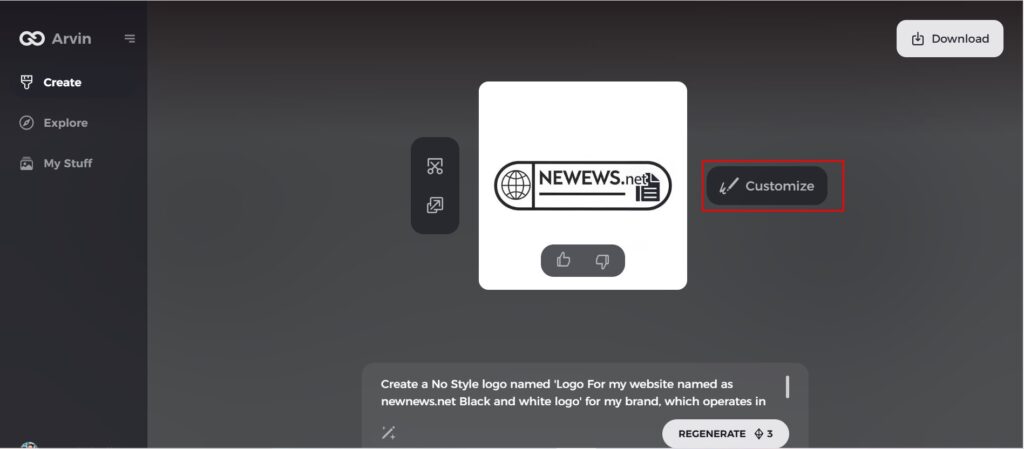
Step 6: Save and download
Preview your final logo and download it in high resolution for both print and online use.
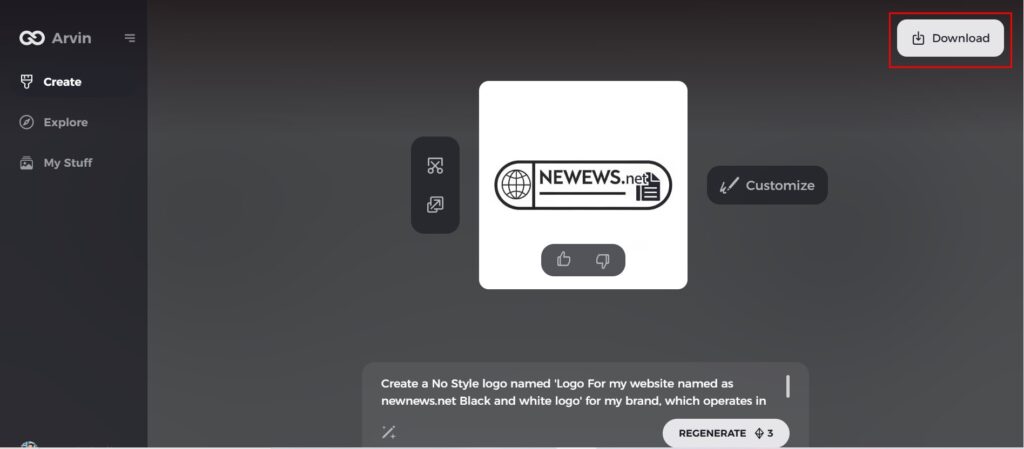
Part 6: Examples of Iconic Logo Fonts in the Real World
The fonts used in iconic logos often convey the crux of the brand. The choice of a font may not only appeal to aesthetic senses but may also carry a story and communicate the essence of a brand. Below, we analyze a few iconic logos along with their fonts.
Coca-Cola
The Coca-Cola logo utilizes a proprietary script font, fluid and curvaceous, in an expression of tradition and joy. From the cursive, there is warmth and familiarity coming through; however, it is bold sweeping lettering that captures the eye. Custom script fonts made Coca-Cola one of the world’s most recognizable brands.
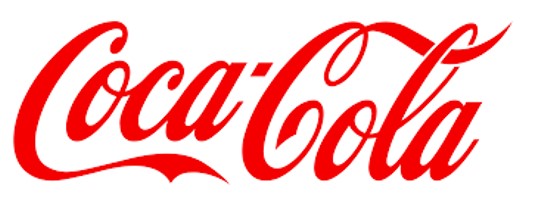
Nike
The logo of Nike has a simple, bold sans-serif font often accompanied by the iconic “swoosh” symbol. The clean lines and modern look of the font match the brand values of innovation, performance, and motivation by Nike. The sans-serif font is easy to read and can be used in different media, reflecting the brand’s focus on athletic performance and modernity.

Apple
The logo of Apple is a sans serif font that seems modern and innovative. Design-wise, a clean and modern type of font speaks directly to what Apple is pointing to by focusing on how the tech is cutting edge and extremely easy to use. This cements the leadership in industry, which with this, links smoothly to the elegance and ease that define the brand best.
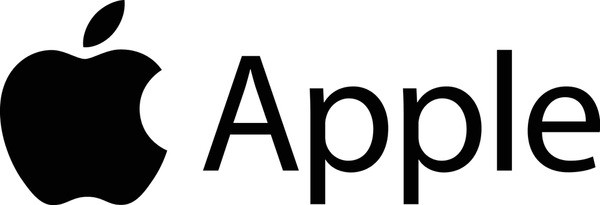
FedEx
The FedEx logo uses a clean sans-serif font in a very simple yet powerful way. The negative space between the “E” and “X” forms an arrow, implying that the company is committed to speed and delivery. This type of typography creates a feeling of reliability and efficiency.
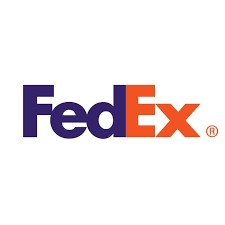
Disney
The Disney logo is done in a custom script font that is whimsical and playful, reflecting the magical and family-friendly nature of the brand. Creative and imaginative, flowing, beautiful font tells that it’s from Disney’s entertainment, storytelling.
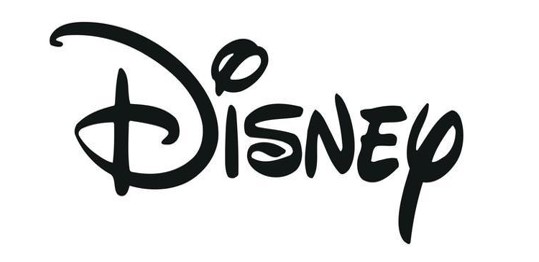
Why These Fonts Work for These Brands
Each of these legendary logos uses a font that has perfect alignment with the identity and values of the company. Whether it is boldness in the case of Nike’s sans-serif or the whiff of fantasy in Disney’s script, fonts are all about communicating the message behind the brand in a manner recognizable at first glance. The essence of their success lies in the consistency that these fonts are used in all marketing and branding materials so that the brand image is unified and memorable.
Conclusion
The logo fonts is a very important step in the formation of a good brand identity. Your personality is defined by the font you choose and it will also leave a mark on the viewer’s mind. With personalized suggestions, easy customizations, and the simplicity of being able to stand out as unique and professional tools like Arvin make it that much easier. Explore your fonts today and make your logo count-your brand’s first impression.
FAQs
What makes a font suitable for a logo?
A good logo should be readable, unique and reflect your brand values. It should be clear at every size, stand out in a crowd, and mirror your brand’s personality .
Can I use free fonts for my logo design?
Yes, but think about licensing restrictions and lack of originality. Free logo fonts may have paid licenses for commercial use, and many are used by multiple brands, which diminishes uniqueness.
How do I pair fonts for a logo and tagline?
Match complementary fonts (such as serif with sans-serif), ensure legibility, and align them with your brand values. Ensure the tagline font complements, not competes with, the logo.
Why should I consider AI tools like Arvin AI for logo font selection?
Arvin AI AI tools can help you be more time efficient, provide personal suggestions, and allow for easy customization. It lets you to easily pick fonts that are consistent with the brand and make it a lot easier to design.

